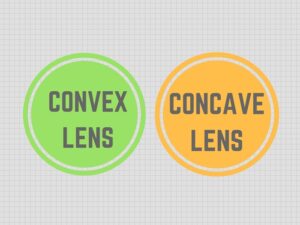Difference Between Bifocal and Progressive Lenses
A comprehensive guide explaining the differences between bifocal and progressive lenses.
What is Bifocal?
Bifocal lenses are eyeglass lenses that contain two distinct optical powers to help with both distance and near vision.
Examples of Bifocal
1. Flat Top Bifocal: This design has a distinct visible line separating the two optical powers.
2. Round Segment Bifocal: These lenses have a rounded segment at the bottom for near vision correction.
What is Progressive?
Progressive lenses, also known as multifocal lenses, provide a smooth transition between different optical powers to correct vision at all distances.
Examples of Progressive
1. Standard Progressive: These lenses offer a gradual change in power with no visible lines.
2. Digital Progressive: These lenses use advanced technology for more precise vision correction.
Differences Table:
| Difference Area | Bifocal | Progressive |
|---|---|---|
| Optical Design | Two distinct optical powers | Smooth transition between powers |
| Visible Lines | Visible line dividing the two powers | No visible lines |
| Correction Range | Corrects distance and near vision | Corrects distance, intermediate, and near vision |
| Adaptation Time | May require some adaptation time | May require less adaptation time |
| Cost | Relatively less expensive | Can be more expensive |
| Aesthetics | Visible lines may affect the appearance | No visible lines, more aesthetically pleasing |
| Segment Size | Segment size is fixed | No fixed segment size, larger distance vision areas |
| Intermediate Vision | May have limited intermediate vision correction | Offers wider intermediate vision correction |
| Prescription Changes | Requires separate prescription for distance and near vision | Requires a single prescription for all distances |
| Variability | Less variation in design and power options | More options for personalization and customization |
Conclusion:
In summary, bifocal lenses have two distinct optical powers with a visible line separating them, while progressive lenses provide a smooth transition between powers without visible lines. Bifocals are more suitable for individuals with specific distance and near vision needs, while progressives offer correction for distance, intermediate, and near vision all within a single lens.
Knowledge Check:
- Which type of lens has a visible line separating the powers?
a) Bifocal
b) Progressive - Which type of lens offers a smooth transition between powers?
a) Bifocal
b) Progressive - Which type of lens corrects distance, intermediate, and near vision?
a) Bifocal
b) Progressive - Which type of lens may require less time to adapt to?
a) Bifocal
b) Progressive - Which type of lens is generally more expensive?
a) Bifocal
b) Progressive - Which type of lens has visible lines that may affect appearance?
a) Bifocal
b) Progressive - Which type of lens has a fixed segment size?
a) Bifocal
b) Progressive - Which type of lens offers wider intermediate vision correction?
a) Bifocal
b) Progressive - Which type of lens requires separate prescriptions for different distances?
a) Bifocal
b) Progressive - Which type of lens offers more options for personalization?
a) Bifocal
b) Progressive
Answers:
- a
- b
- b
- b
- b
- a
- a
- b
- a
- b
Related Topics:
- Advantages and Disadvantages of Bifocal Lenses
- Choosing the Right Progressive Lens Design
- Common Myths About Multifocal Lenses



